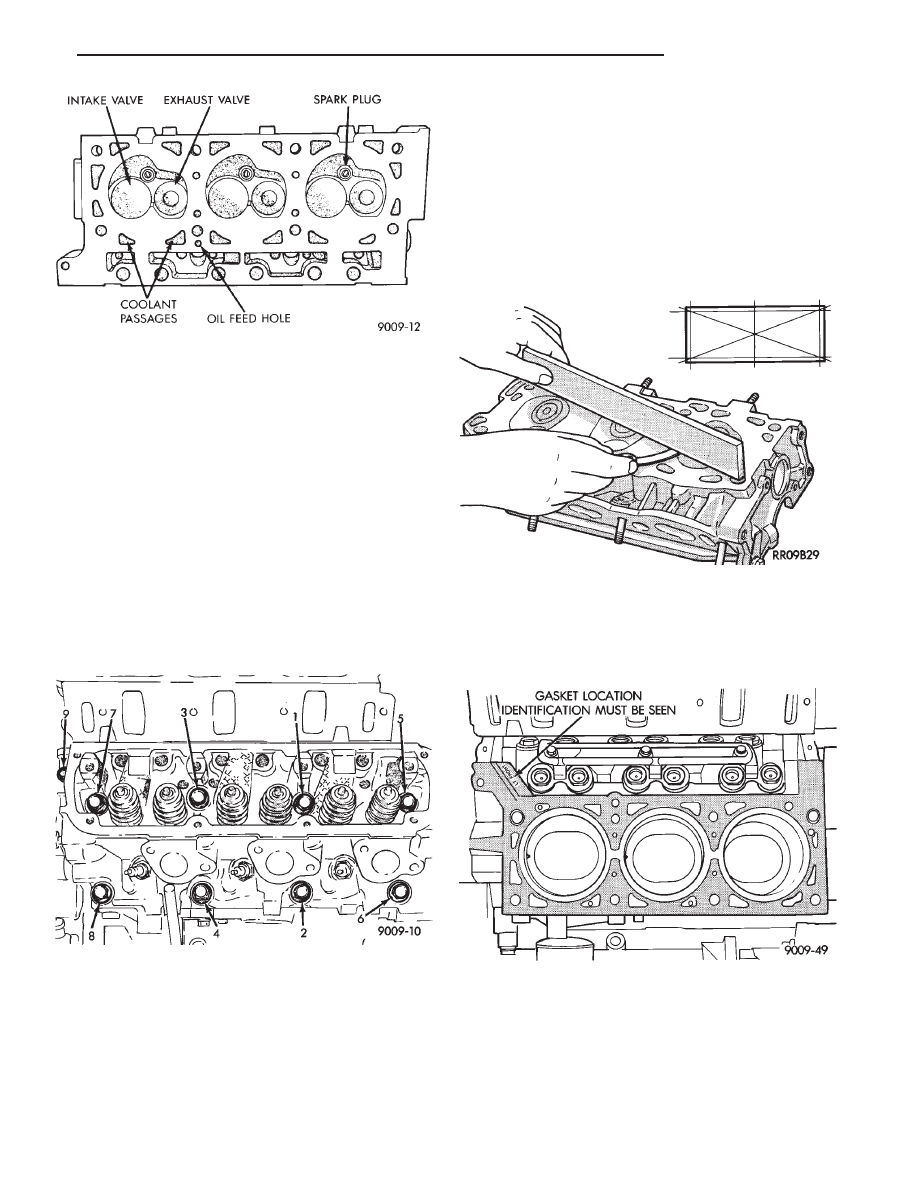Chrysler Town & Country/Voyager, Dodge Caravan, Plymouth Voyager. Manual - part 314

REMOVAL
(1) Drain cooling system refer to Cooling System
Group 7 for procedure and disconnect negative battery
cable.
Remove intake manifold, and throttle body. Refer to
Group 11 Exhaust System and Intake Manifold.
(2) Disconnect coil wires, sending unit wire, heater
hoses and by-pass hose.
(3) Remove closed ventilation system, evaporation
control system and cylinder head covers.
(4) Remove exhaust manifolds.
(5) Remove rocker arm and shaft assemblies. Re-
move push rods and identify to insure installation
in original locations.
(6) Remove the 9 head bolts from each cylinder head
and remove cylinder heads (Fig. 7).
INSPECTION
(1) Before cleaning, check for leaks, damage and
cracks.
(2) Clean cylinder head and oil passages.
(3) Check cylinder head for flatness (Fig. 8).
(4) Inspect all surfaces with a straightedge if there is
any reason to suspect leakage. If out of flatness exceeds
.019mm (.00075 inch). times the span length in inches
in any direction, either replace head or lightly machine
the head surface. As an example, if a 12 inch span is
1mm (.004 inch) out of flat, allowable is 12 x .019mm
(.00075 inch) equals .22mm (.009 in.) This amount of
out of flat is acceptable.
*Maximum of 0.2 mm (.008 inch) for grinding is
permitted.
CAUTION: This is a combined total dimension of
stock removal from cylinder head and block top
surface.
INSTALLATION
(1) Clean all surfaces of cylinder block and cylinder
heads.
(2) Install new gaskets on cylinder block (Fig. 9).
The Cylinder head bolts are torqued using the
torque yield method, they should be examined
BEFORE reuse. If the threads are necked down,
the bolts should be replaced (Fig. 10).
Necking can be checked by holding a scale or straight
edge against the threads. If all the threads do not
contact the scale the bolt should be replaced.
Fig. 6 Cylinder Head Assembly
Fig. 7 Cylinder Head Bolts Location
Fig. 8 Check Cylinder Head
Fig. 9 Head Gasket Installation
.
3.3L ENGINE
9 - 87